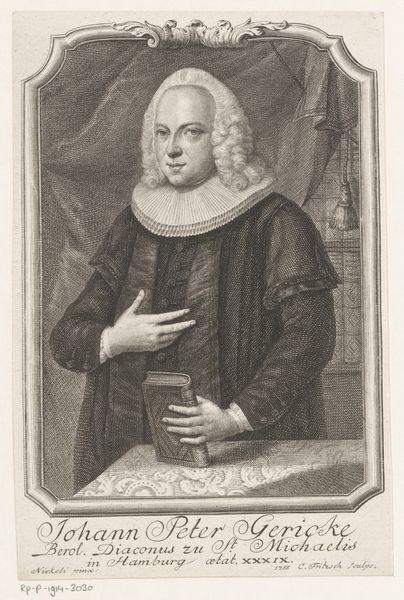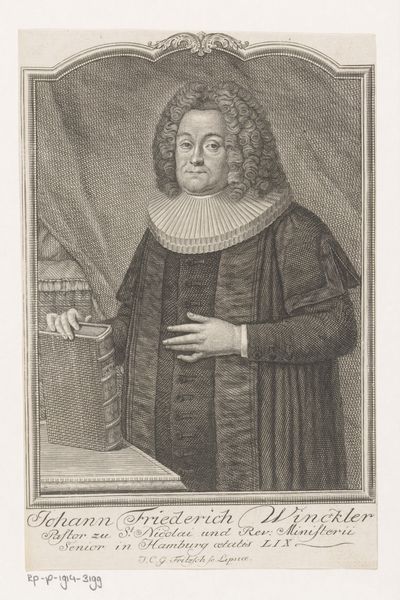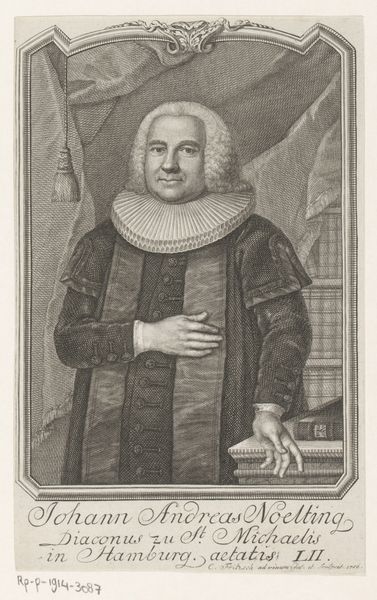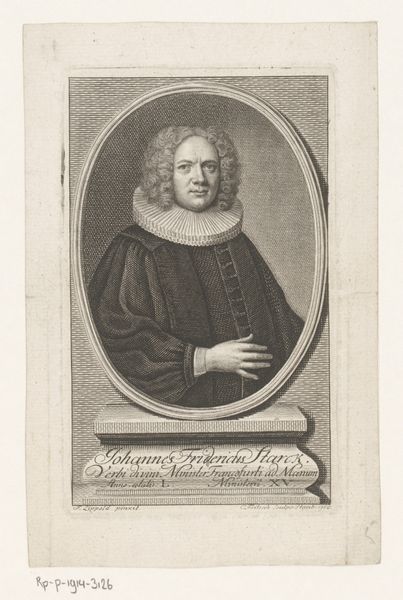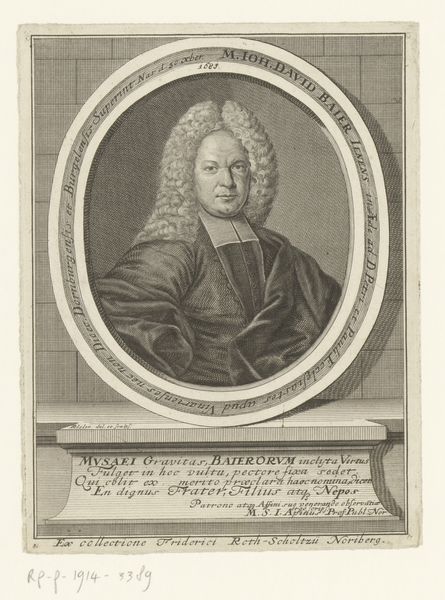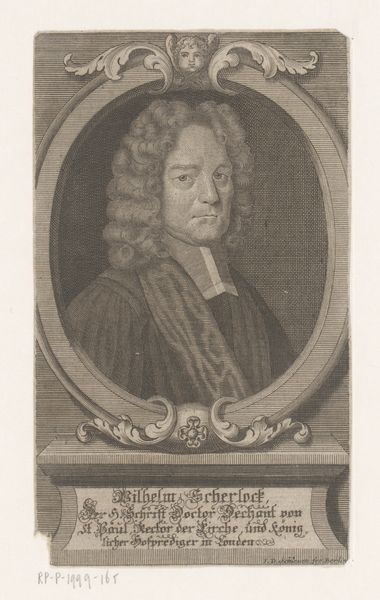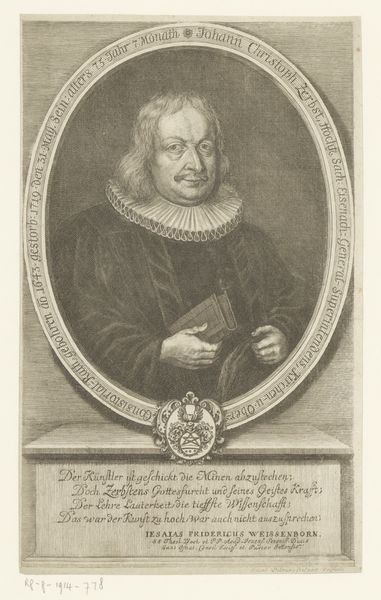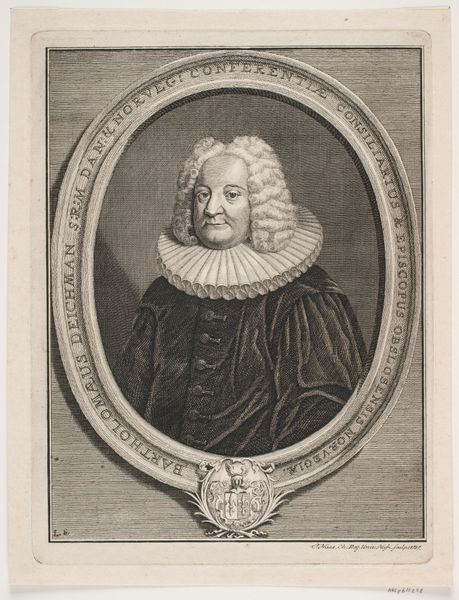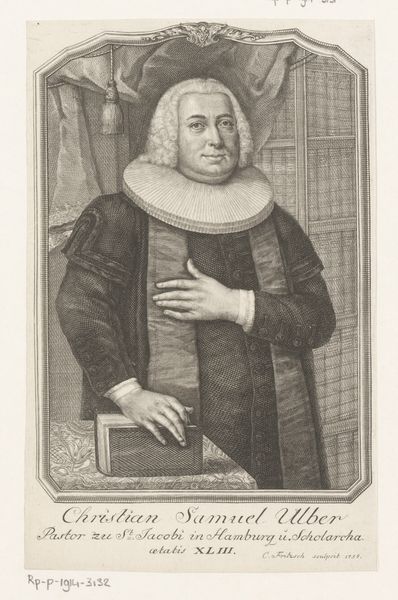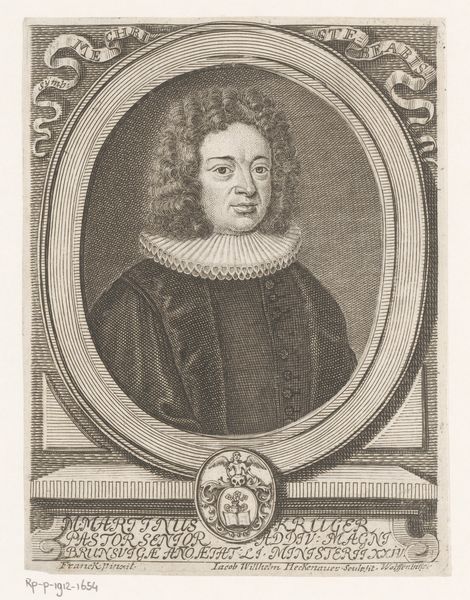
Dimensions: 216 mm (height) x 149 mm (width) (bladmaal)
Editor: Here we have Jonas Haas’s “Biskop Peder Hersleb,” an engraving from sometime between 1759 and 1763. It's striking how the subject is framed by what looks like a window, creating an almost theatrical effect. It gives the figure a sense of importance, but it also feels quite formal and stiff. What's your take on it? Curator: What interests me is situating this piece within its socio-political context. This is not simply a portrait; it's a representation of power and authority within a very specific historical moment. How does the Bishop’s attire—the wig, the ruff—contribute to that representation? What message does that project? Editor: I guess it shows he's someone important, wealthy maybe? The ruff especially looks quite restrictive, and unnatural. Curator: Exactly. Think about how dress codes and social status were inextricably linked during this period. Consider also the Danish-Norwegian context of the 18th century. Hersleb was a significant religious figure, but how did the church and its representatives function within the larger colonial structure? Was the Church complicit, neutral, or in active opposition? How do we view such figures through a contemporary post-colonial lens? Editor: That’s a lot to consider. I hadn’t thought about the colonial aspects at all. I suppose the portrait flattens out those complexities. Curator: Precisely. And how does the medium itself – engraving – play into this? Engravings were often used to disseminate images and ideas. What kind of audience was this intended for, and what message was Haas trying to convey about Bishop Hersleb? It serves as both a representation of the individual and an affirmation of the prevailing societal order. Editor: I’m seeing this in a new light now. It’s not just a picture of a bishop, but a statement about power and societal norms. Curator: Precisely, which is what makes art history a compelling site for analysis, as a lens onto the values of past societies, especially their injustices. It prompts us to see how such representations can uphold and contest authority and consider their implications today.
Comments
No comments
Be the first to comment and join the conversation on the ultimate creative platform.
